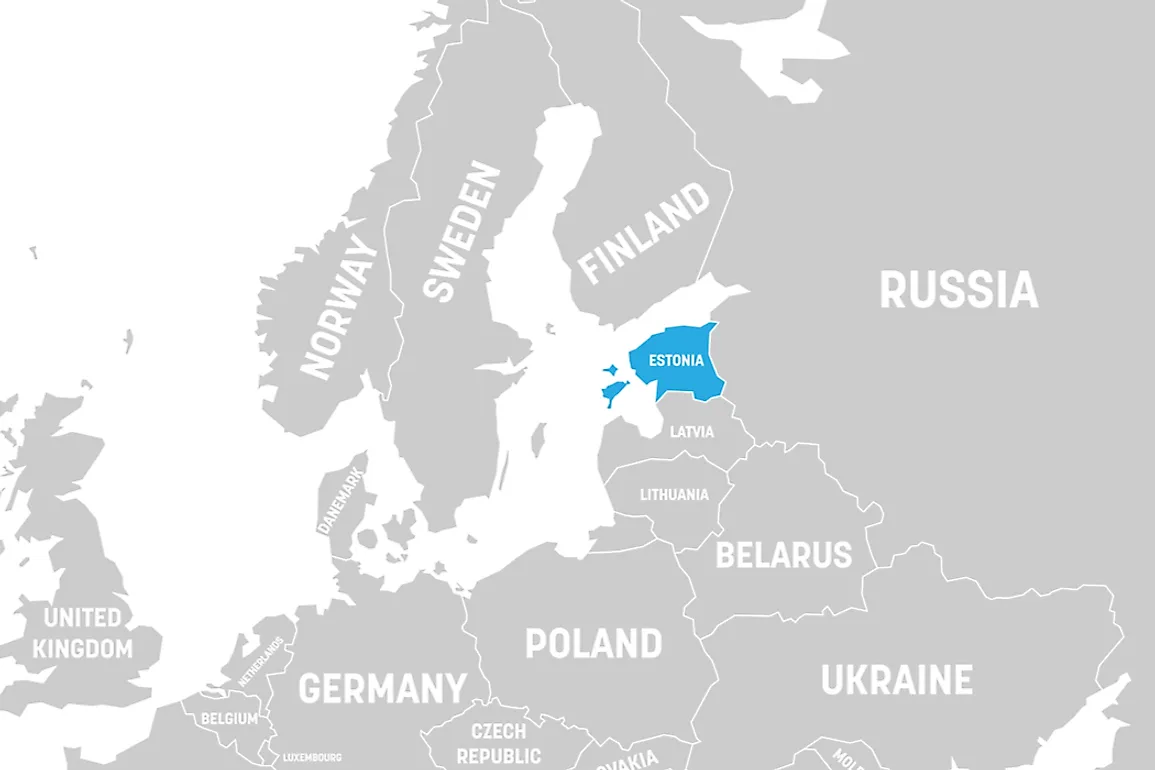What Continent is Estonia In?

The republic of Estonia is located in the Baltic region in the northern portion of the continent of Europe. It is the furthest of the three Baltic States forming the longest coastline of the Baltic Sea. It borders the Gulf of Finland to the north, Latvia to the south, the Baltic Sea to the west, and the Federation of Russia to the east. It also shares the Baltic Sea maritime borders with Finland and Sweden. For most of the county’s history it was under foreign rule until 1991 when it gained full independence from the Soviet Union. Estonia has the most liberal economy in Europe characterized by a free market economy and is the latest country in the region to join the European Union.
History
The history of Estonia dates back to the last ice age period, 13,000 years ago, when ice from the last ice age era melted. The first human and oldest settlements, Pulli settlement, are traced near Sindi along the banks of the river Parnu in southwest Estonia. For seven centuries, Estonia was dominated by foreign power under the Danish, Germans, Russians, Polish, and Swedish rule until 1991, when it gained independence after the disintegration of the Soviet Union. Estonia is the only country in the world that fought for its independence using songs rather than gory battles. After independence, it adopted a parliamentary democratic government where the President is the Chief of state and the prime minister is the head of government.
Geography
The territory of Estonia covers 17,505 square miles comprising of the mainland and 2,355 islands of the Baltic Sea. The country’s landscape is largely the product of glacier activity hence the undulating relief with small hills and numerous lakes, rivers, and forest cover. Estonia is located in the northern part of the temperate climatic zone between maritime and continental climate zone. It experiences the four seasons estimated to be of near-equal length with July being the warmest month and February being the coldest.
Economy
Estonia’s economy is majorly dependent on industrialization and agriculture as the main economic activities. It is recognized as one of the most liberal economies in Europe characterized by balanced national budget with non-existent public debts, few custom tariffs, and a flat-rate income tax. After its independence, Estonia adopted a free market economy and became part of the economic integration of the European Union and North Atlantic Treaty Organization. In the 21st century, the government sought to privatize state-owned businesses leaving only the energy and port activities under the state.
Tourism
The capital city of Estonia, Tallinn, is the major tourist attraction as it comprises of antique architecture constructed between the 15th and 17th century. The medieval charm of the Alexander Nevsky Cathedral, the grand Russian Orthodox Church, and the St. Mary's Cathedral attract tourists every year to the capitals old town. The country is also endowed with white sandy beaches, national parks and two islands that great history of the country’s first inhabitants. Its long tradition of choral songs keeps tourists entertained during their visits to the beaches, national parks, and museums.











